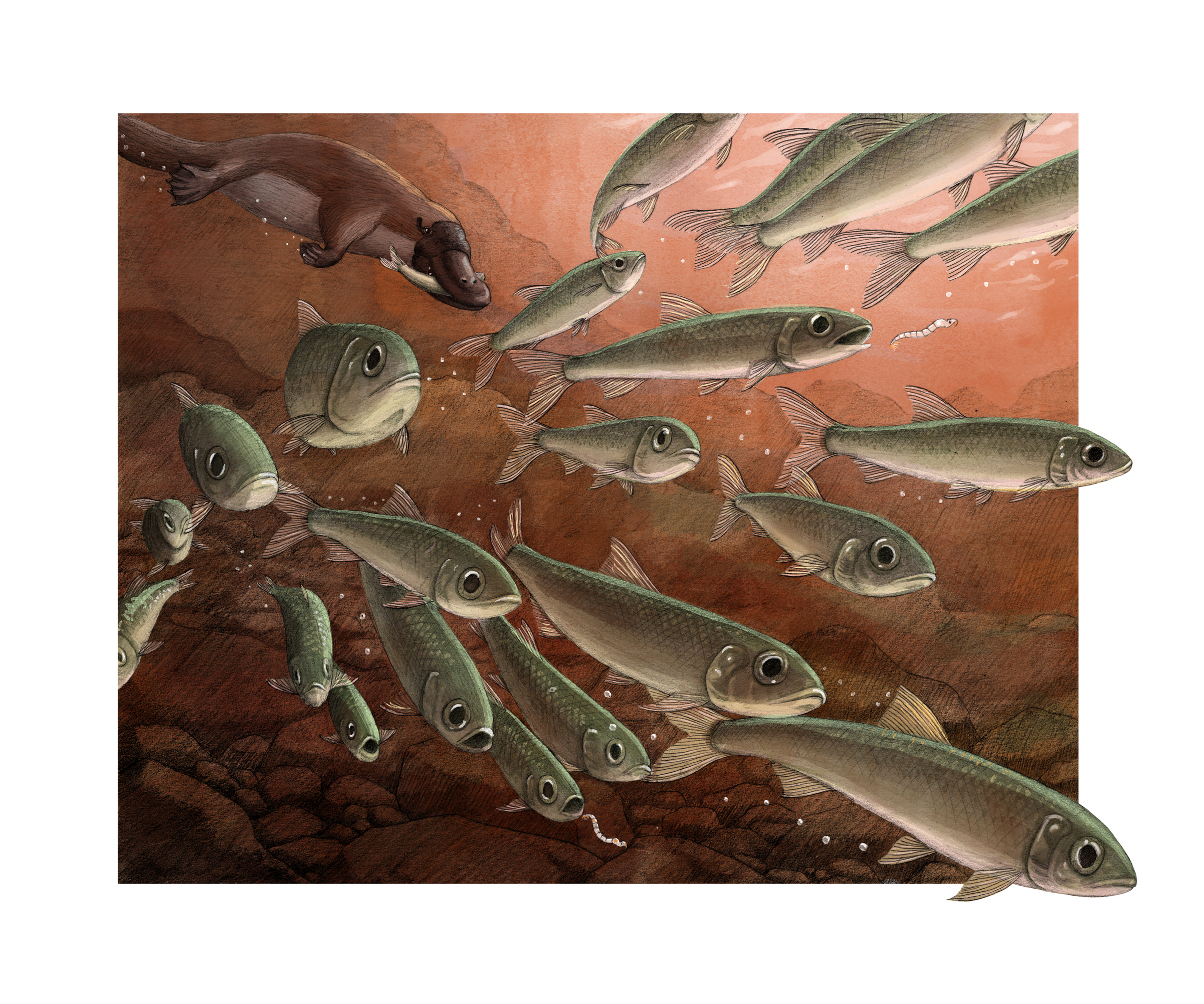Fossils of 15 million-year-old freshwater fish discovered in Australia represent a species completely new to science — and they still have the remains of their final meals in their stomachs.
The fossils of the new species, named Ferruaspis brocksi, were unearthed by paleontologists at the McGraths Flat fossil site in New South Wales, Australia, according to a new study published March 17 in the Journal of Vertebrate Paleontology.
Inside several of the fish’s stomachs were the fossilized remains of their last suppers, including bits of insect larvae, two insect wings, and a bivalve (a mollusk with two hinged shells, such as a clam or a mussel).
The discovery is the first fossil of a freshwater smelt — a small, silvery fish — in the group Osmeriformes to have been discovered in Australia and will help scientists determine when these fish arrived on the enormous island.
“The discovery of the 15 million-year-old freshwater fish fossil offers us an unprecedented opportunity to understand Australia’s ancient ecosystems and the evolution of its fish species, specifically the Osmeriformes group during the Miocene epoch, 11-15 million years ago,” study lead author Matthew McCurry, a paleontologist at the Australian Museum and the University of New South Wales, said in a statement.
Osmeriformes is a broad order of fish that includes various smelt species found worldwide, both in freshwater and marine environments. Smelt are relatively common across the U.S., particularly in the Great Lakes, the Northeast, the Pacific Northwest, and Alaska, though some species are also present in inland rivers and lakes. There are at least six species of smelt across the country, including rainbow smelt (Osmerus mordax), Eulachon or Columbia River smelt (Thaleichthys pacificus) and delta smelt (Hypomesus transpacificus).

Scientists have long wondered exactly when smelt and related species arrived in Australia because the fossil record for this group of fish and their ancestors has been notably sparse. “Without fossils it has been hard for us to tell exactly when the group arrived in Australia and whether they changed at all through time,” McCurry said.
Related: Living fossils: 12 creatures that look the same now as they did millions of years ago
In the new study, the researchers describe how they discovered the fossilized remains of F. brocksi embedded in goethite, an iron-rich mineral. By analyzing the fossils with high-powered microscopes, the researchers discovered that the specimens had been preserved with a surprisingly high level of detail. The position of the fish’s bones and fins, cells that gave the fish color, and their final meals had all remained frozen in time for 15 million years.
Because the paleontologists discovered several fish from this new species preserved at the same site, they could piece together what the ancient fish species might have looked like, as not every fish was entirely preserved. According to the researchers, F. brocksi represents an early ancestor of species in the Osmeriformes order found across Australia and New Zealand today.
“The fossils formed between 11 [million] and 16 million years ago and provide a window into the past,” McCurry said. “They prove that the area was once a temperate wet rainforest and that life was rich and abundant in the Central Tablelands, NSW [New South Wales].”
Their stomach contents also offer a glimpse into the behavior of this ancient species. “We now know that they fed on a range of invertebrates, but the most common prey was small phantom midge larvae,” McCurry said.
Additionally, the unexpected discovery of fossilized pigment cells called melanophores allowed the researchers to determine what color the fish might have been. “The fish was darker on its dorsal surface, lighter in colour on its belly and had two lateral stripes running along its side,” study co-author Michael Frese, a researcher at the University of Canberra and Australia’s national science agency CSIRO, said in the statement.
Melanophores are responsible for producing melanin, the pigment that gives color to skin, hair, eyes and feathers.
“Fossilised melanosomes have previously enabled palaeontologists to reconstruct the colour of feathers,” Frese said, but melanosomes have never been used to reconstruct the color pattern of a long-extinct fish species.
